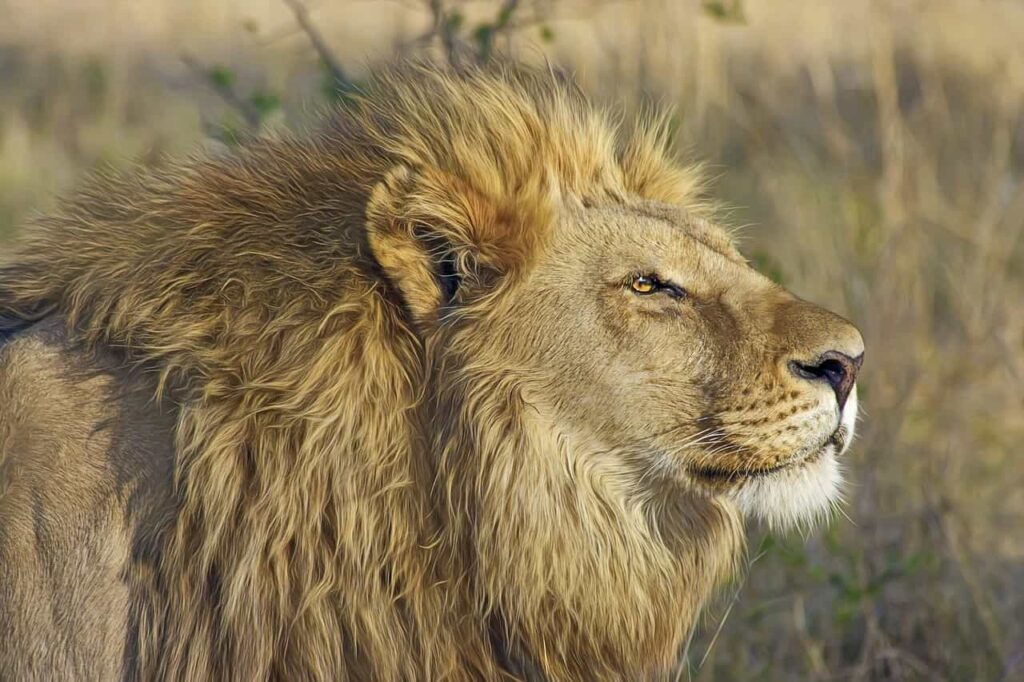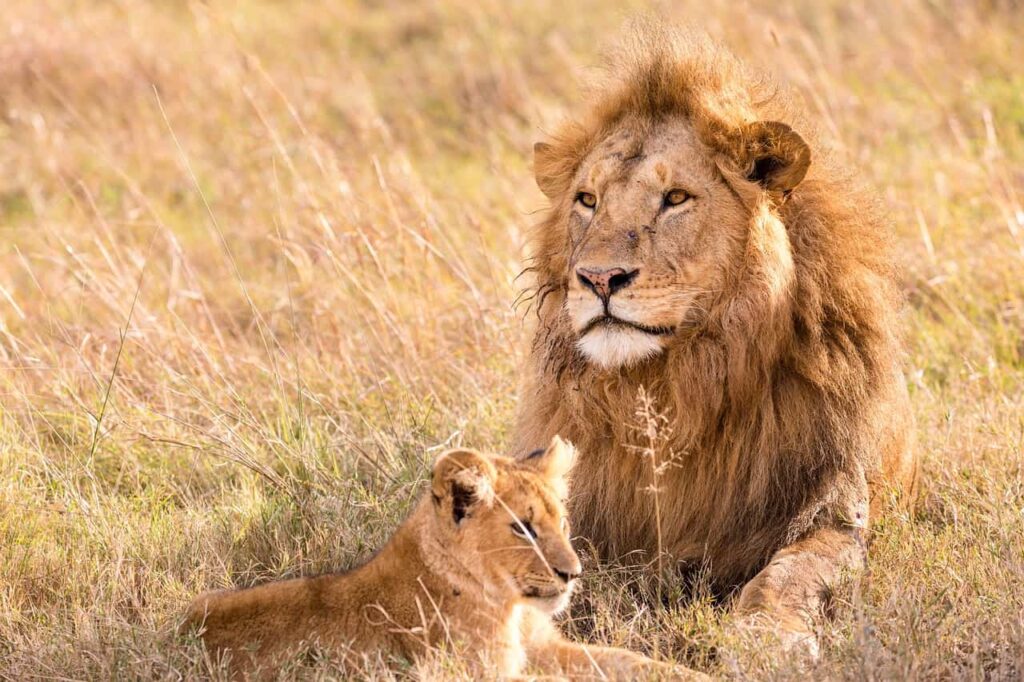Why Do Lions Have Manes?
Why do lions have manes? This question is asked frequently on the internet. Lions have manes basically for the reproductive and evolutionary purpose. But there are number of some other reasons why lions have manes. In this article, we are going to explore those reasons.
Dominance and Attractiveness
Male lions begin to develop thick manes around their heads, necks, and underbelly as they approach sexual maturity. This process is brought on by the hormone testosterone; strangely, neutered guys typically completely lose their manes. Manes appear to be an indicator of sexual fitness because studies have shown that females are drawn to larger, darker manes.

Lion’s Mane is Also a Signal for Other Male Lions
Protection
During fights with rival males, the mane protects the lion’s neck and throat by cushioning bites and blows, that helps in lowering the risks of serious injuries.
Thermoregulation
While it is not the major function, the mane can give some sun protection and assist regulate body temperature, particularly in hotter areas. The thick hair can act as insulation, trapping a layer of air and aiding in body cooling.
Theory of Evolution and Manes
The evolution of lion manes is a fascinating case study of how natural selection and sexual selection, two essential mechanisms of evolution, can modify a species’ physical traits over time.
Natural Selection:
Lions with larger manes may have an advantage in their natural surroundings. While the mane does not help in hunting or survival, it can provide protection during battles with other males. A thick, muscular mane can protect the neck and throat from major injury. Lions with well-kept manes may be more successful in combat, resulting in higher survival and reproduction. Natural selection would cause lions with genes for larger and more protective manes to become more common in the population over generations.
Sexual Selection:
The mane’s main purpose is in the context of sexual selection. Lionesses frequently prefer males with thicker, darker manes. The mane, like the tail of a peacock or the antlers of a deer, is a secondary sexual trait. During mating season, males with prominent manes are more appealing to females. The preference of lionesses for males with outstanding manes may result in the frequency of this characteristic in the population. This is a classic case of sexual selection, in which specific characteristics are preferred because they boost an individual’s chances of mating and reproducing.
It’s worth noting that the evolution of lion manes is the consequence of complex interaction between genetics, environmental conditions, and mating preferences. Lions with beneficial mane features are more likely to pass on their genes to the next generation, resulting to the predominance and prominence of manes in male lions over time, whether through natural selection or sexual selection. This evolutionary process demonstrates how features that appear beautiful or non-functional at first appearance can be critical to a species’ survival and reproductive success.

Female Lions Prefer Lions with thick Manes
Factors Affecting Mane Size
.There are different factors that influence the size, shape and color of the manes in male lions. A detailed introduction of those factors is given below.
Genetics:
The genetics of a lion’s mane influence its size, color, and thickness. Some lions are genetically prone to have larger, fuller manes, whereas others may develop smaller, less noticeable manes. Mane size can vary due to genetic differences within lion populations.
Hormones:
Hormones are important in the formation of a lion’s mane. Male lions have much higher testosterone levels than females. As lions mature and reach adulthood, their bodies create more testosterone, which promotes mane growth. The darkness of the mane is likewise influenced by testosterone, with higher amounts frequently resulting in darker and fuller manes.
While Environment does not directly affect mane size, environmental factors such as temperature might have an indirect impact on mane development.



